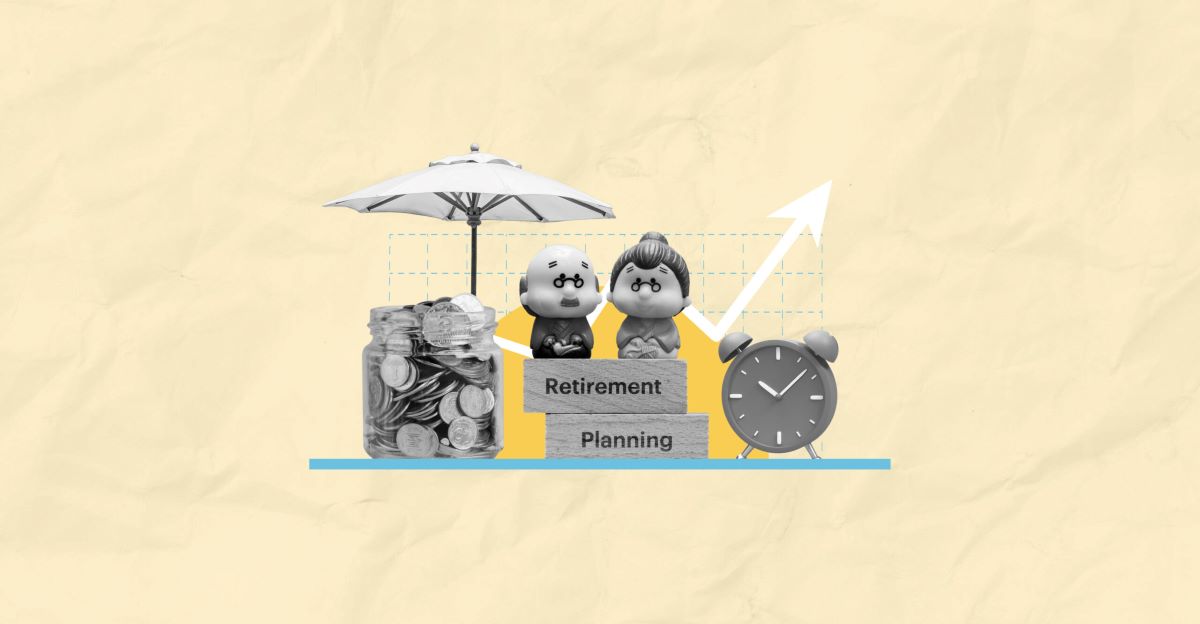Home>Finance>How Long Does Credit Card Balance Transfer Take


Finance
How Long Does Credit Card Balance Transfer Take
Modified: December 29, 2023
Discover how long it takes for a credit card balance transfer to process. Find out the finance details and timeline for transferring your credit card debt.
(Many of the links in this article redirect to a specific reviewed product. Your purchase of these products through affiliate links helps to generate commission for LiveWell, at no extra cost. Learn more)
Table of Contents
Introduction
A credit card balance transfer can be a useful tool for managing credit card debt and saving on interest charges. It involves transferring the outstanding balance from one credit card to another, usually with a lower interest rate. However, many people wonder how long the process takes. In this article, we will explore the timeframe of a credit card balance transfer and what factors can affect it.
Understanding the process of a credit card balance transfer is crucial before delving into the time it takes. When you transfer a balance, you essentially move the debt from one credit card to another. This is often done to take advantage of promotional interest rates or to consolidate multiple credit card balances into one account.
The timeframe of a credit card balance transfer can vary depending on several factors, including the credit card issuer, the amount being transferred, and the efficiency of the involved financial institutions. While some transfers can be completed within a few days, others may take several weeks. It’s important to be aware of these factors and plan accordingly to avoid any unforeseen delays.
Factors that can affect the timeframe of a credit card balance transfer include the verification process, the processing time of the credit card issuer, and the method of transfer. The verification process typically involves confirming the accuracy of the information provided, such as the outstanding balance and account details. This step is essential to ensure a smooth transfer and prevent fraudulent activity.
The processing time of the credit card issuer plays a significant role in the overall timeframe. Different issuers have varying efficiency levels, which can impact how quickly they process balance transfers. Some issuers might have streamlined procedures and quick turnaround times, while others may take longer to complete the transfer.
The method of transfer also affects the timeframe. Most balance transfers are done electronically, which can expedite the process. However, some institutions may require manual processing, such as mailing physical checks, which can add additional time to the transfer.
Typically, credit card balance transfers take anywhere from a few days to a few weeks to complete. Some credit card issuers advertise quick transfer times as a promotional feature, aiming to attract customers looking for immediate savings on interest charges. It’s essential to carefully review the terms and conditions of any promotional offer to understand the expected timeframe and any associated fees.
Understanding Credit Card Balance Transfers
A credit card balance transfer refers to the process of moving an outstanding balance from one credit card to another. This can be a useful strategy for individuals looking to manage their credit card debt more effectively. By transferring a balance to a credit card with a lower interest rate or promotional offer, you can potentially save on interest charges and pay off your debt faster.
When you initiate a credit card balance transfer, the new credit card issuer pays off the balance on your existing credit card, effectively transferring the debt to the new card. From that point onwards, you owe the new card issuer the outstanding balance, subject to the terms and conditions of the new card.
It’s important to note that balance transfers are typically subject to certain fees and interest rates. Most credit card issuers charge a balance transfer fee, which is a percentage of the transferred amount. Additionally, some balance transfers come with promotional interest rates, allowing you to pay little to no interest for a specific period of time. However, once the promotional period ends, the interest rates may increase, so it’s crucial to review the terms and conditions of the new card carefully.
Balance transfers can offer several benefits, including:
- Lower interest rates: Transferring your balance to a card with a lower interest rate can save you money on interest charges.
- Consolidation of debt: If you have multiple credit card balances, transferring them to a single card can simplify your finances and make it easier to manage your payments.
- Reduced monthly payments: By securing a lower interest rate or extending the repayment period, you may be able to lower your monthly payments, providing more breathing room in your budget.
- Pay off debt faster: With lower interest rates, more of your payment goes towards the principal balance, allowing you to pay off your debt more quickly.
It’s essential to understand the terms and conditions of the new credit card before initiating a balance transfer. Factors such as the interest rates, promotional periods, balance transfer fees, and any additional charges or penalties should be carefully reviewed.
Additionally, it’s important to note that not all credit cards are eligible for balance transfers. Some credit card issuers may have restrictions or guidelines in place regarding the types of balances that can be transferred. It’s advisable to contact the new credit card issuer or review their terms and conditions to ensure your balance is eligible for transfer.
By understanding the basics of credit card balance transfers, you can make informed decisions and utilize this financial tool to effectively manage your credit card debt and save on interest charges.
Process of a Credit Card Balance Transfer
The process of a credit card balance transfer involves a series of steps to transfer the outstanding balance from one credit card to another. While the specific process may vary depending on the credit card issuer, here is a general overview of how a balance transfer typically works:
- Evaluate current credit card and options: Assess your current credit card and determine if a balance transfer is the right choice for you. Consider factors such as the interest rate, fees, and any promotional offers available on other credit cards.
- Research and choose a new credit card: Research different credit card options and select a card that suits your needs. Look for one with a lower interest rate or a promotional offer that fits your financial goals.
- Apply for the new credit card: Complete the application process for the new credit card. Ensure you provide accurate information, including the current credit card account number, outstanding balance, and issuer details.
- Approval and credit limit: Once your application is approved, the new credit card issuer will assign you a credit limit. This limit determines how much of your outstanding balance can be transferred to the new card.
- Initiate the balance transfer: Contact the new credit card issuer and provide the necessary details to initiate the balance transfer. This typically involves providing the information of the current credit card, including the account number and outstanding balance.
- Verification process: The new credit card issuer will verify the information provided, including the outstanding balance and account details. This step ensures the transfer is accurate and valid.
- Processing time: The processing time for the balance transfer can vary depending on the credit card issuer. Some transfers can be completed within a few days, while others may take several weeks. It’s important to be aware of the expected timeframe and any associated fees.
- Confirmation of transfer: Once the balance transfer is complete, you will receive confirmation from the new credit card issuer. This confirmation will indicate that the outstanding balance has been transferred to your new credit card.
- Continue making payments: Even after the balance transfer, it’s essential to continue making payments on the old credit card until the outstanding balance is fully paid off. This ensures you avoid any late or missed payments on the previous card.
- Manage the new credit card: Once the balance transfer is complete, manage your new credit card responsibly. Make timely payments, avoid accumulating new debts, and take advantage of any promotional interest rates to pay off your balance efficiently.
It’s important to note that the process and specific details may vary depending on the credit card issuer and their individual policies. It’s advisable to review the terms and conditions provided by the new credit card issuer and contact their customer service for any clarification or assistance throughout the balance transfer process.
Factors That Affect the Timeframe of a Credit Card Balance Transfer
The timeframe of a credit card balance transfer can vary depending on several factors. Understanding these factors can help you better manage your expectations and plan accordingly. Here are some key factors that can affect the timeframe of a credit card balance transfer:
- Credit card issuer: Different credit card issuers have varying processing times for balance transfers. Some may have streamlined procedures and quicker turnaround times, while others may take longer to process and complete the transfer. It’s advisable to research and choose a credit card issuer known for efficient and prompt balance transfers.
- Verification process: The verification process is an essential step in a credit card balance transfer. The new credit card issuer will verify the accuracy of the information provided, including the outstanding balance and account details of the current credit card. This verification process ensures the transfer is valid and helps prevent fraudulent activity. The duration of the verification process can impact the overall timeframe of the transfer.
- Amount being transferred: The amount being transferred can also influence the timeframe of the balance transfer. Transferring a large balance may require additional verification and processing time compared to transferring a smaller amount. It’s important to consider the size of the balance you wish to transfer and how it may impact the overall timeframe.
- Method of transfer: The method of transfer can affect the timeframe as well. Most balance transfers are done electronically, which can expedite the process. However, in some cases, the new credit card issuer may require manual processing, such as mailing physical checks to pay off the outstanding balance. This manual processing can add additional time to the transfer, so it’s essential to inquire about the specific transfer method used by the credit card issuer.
- Promotional offers: Some credit card issuers offer promotional balance transfer offers, which may include faster processing times as a part of the promotion. These offers often advertise quick transfer times to attract customers looking for immediate savings on interest charges. However, it’s important to read the terms and conditions of these promotions carefully, as they may also include additional fees or higher interest rates after the promotional period ends.
- Efficiency of involved financial institutions: The efficiency of both the current credit card issuer and the new credit card issuer can impact the timeframe of a balance transfer. Some financial institutions may have more streamlined processes and systems in place, leading to quicker transfers. On the other hand, delays or inefficiencies in the banks or credit card companies involved can result in longer processing times.
It’s important to keep these factors in mind when considering a credit card balance transfer. While some transfers can be completed within a few days, others may take several weeks. It’s essential to review the terms and conditions of the new credit card and contact the credit card issuers for any specific timeline and fee information.
Typical Timeframes for Credit Card Balance Transfers
The timeframe for a credit card balance transfer can vary depending on several factors, as previously discussed. While it’s important to note that individual experiences may vary, here are some typical timeframes you can expect for credit card balance transfers:
1. Expedited transfers: Some credit card issuers offer expedited transfers as a feature to attract customers. These transfers can typically be completed within a few days, often ranging from 1 to 3 business days. However, it’s crucial to note that expedited transfers may come with additional fees or shorter promotional periods.
2. Standard transfers: For most credit card balance transfers, the standard timeframe ranges from 7 to 14 business days. This timeframe includes the verification process, processing time of both credit card issuers, and the actual transfer of the outstanding balance. It’s essential to plan your payments and budget accordingly during this period to avoid any missed or late payments on the old credit card.
3. Longer transfers: In some cases, credit card balance transfers may take longer, often extending beyond the 14-day timeframe. This can happen due to various reasons, such as delays in verification, complications with the transfer process, or inefficiencies within the involved financial institutions. If you experience a longer transfer timeframe, it’s advisable to contact both credit card issuers for updates and to ensure there are no issues affecting the completion of the transfer.
4. Promotional transfer offers: Some credit card issuers may advertise faster transfer times as part of their promotional balance transfer offers. These promotions may highlight quick transfers within a specific timeframe, such as 5 business days or even less. However, it’s important to carefully review the terms and conditions associated with these offers, as they may include additional fees, higher interest rates after the promotional period, or specific eligibility criteria.
The specific timeframe for a credit card balance transfer can also be influenced by factors such as the credit card issuer’s policies, the efficiency of the involved financial institutions, and the method of transfer. It’s important to plan ahead, considering the estimated timeframe, and ensure that you continue making payments on the old credit card until the transfer is confirmed and complete.
Remember to review the terms and conditions of the new credit card, including any promotional offers, balance transfer fees, and the duration of promotional interest rates. Being aware of these details can help you make informed decisions and manage your credit card debt effectively.
Tips for Expediency in Credit Card Balance Transfers
If you’re looking to expedite the process of a credit card balance transfer, there are several tips and strategies you can follow to help streamline the process. While individual experiences may vary, here are some helpful tips for a faster and smoother credit card balance transfer:
- Choose a credit card issuer known for quick transfers: Research and select a credit card issuer with a reputation for efficient balance transfers. Look for issuers that advertise quick transfer times or have positive customer reviews regarding the speed of their transfers.
- Provide accurate and complete information: When applying for the new credit card and initiating the balance transfer process, make sure to provide accurate and complete information. Any inaccuracies or missing details may result in delays during the verification process.
- Double-check transfer details: Before initiating the balance transfer, double-check all the transfer details, including the account number and outstanding balance of your current credit card. Incorrect information can lead to verification delays and prolong the transfer process.
- Follow up with both credit card issuers: Stay proactive throughout the balance transfer process by regularly contacting both the current and new credit card issuers for updates. By following up, you can address any issues or concerns promptly and ensure that the transfer is progressing smoothly.
- Opt for electronic transfers: Whenever possible, choose electronic transfers over manual methods like physical checks. Electronic transfers are generally faster and more efficient, reducing the chances of delays in processing.
- Review the terms and conditions: Thoroughly read and understand the terms and conditions of the new credit card and the balance transfer offer. Pay attention to any specific requirements or actions you need to take to ensure a smooth and expedited transfer.
- Make timely payments on both cards: Even during the balance transfer process, it’s crucial to continue making payments on the old credit card until the outstanding balance is fully transferred. This ensures that you stay current on your payments and avoid late fees or penalties.
- Avoid additional charges or debt: While the balance transfer is in progress, refrain from incurring additional charges or debts on both the old and new credit cards. This will help minimize any complications during the transfer and ensure a more accurate final balance.
- Be patient and understanding: While you may have taken steps to expedite the process, there can still be factors outside of your control that impact the transfer timeframe. Stay patient and understanding throughout the process, and if necessary, reach out to customer service for assistance or updates.
By implementing these tips, you can increase the likelihood of a faster and smoother credit card balance transfer. However, it’s essential to remember that the exact timeframe can still vary depending on various factors, including the credit card issuers involved and any unforeseen circumstances. Being prepared and staying proactive can help minimize delays and ensure a successful transfer.
Conclusion
A credit card balance transfer can be an effective strategy to manage credit card debt and save on interest charges. While the timeframe of a balance transfer may vary depending on several factors, including the credit card issuer, verification process, and amount being transferred, understanding these factors can help you plan accordingly.
During a credit card balance transfer, it is essential to choose a credit card issuer known for quick transfers and provide accurate information to expedite the process. Following up with both the current and new credit card issuers, opting for electronic transfers when possible, and reviewing the terms and conditions of the new credit card can also contribute to a faster transfer.
Typically, balance transfers can range from a few days to a few weeks, with expedited transfers or promotional offers offering quicker turnaround times. However, delays may occur, and it is important to continue making payments on the old credit card until the transfer is confirmed and complete.
To ensure a successful balance transfer, it is crucial to remain patient, proactive, and understanding throughout the process. By implementing the tips provided and staying informed about the progress of the transfer, you can effectively manage your credit card debt and potentially save on interest charges.
Remember to review the terms and conditions, including any fees, promotional interest rates, and post-transfer interest rates associated with the new credit card. By making informed decisions and carefully managing your credit card balance transfer, you can take control of your finances and work towards becoming debt-free.














